… that it was Earth Day, but I’d gone out to the neighborhood pond for the first time in weeks, just to see what was going on, and so I have some pics for it anyway.
The turtles were out of course, but it was more necessary this time, because yesterday and last night it had gotten pretty cold. So we have yellow-bellied sliders (Trachemys scripta scripta):

I have a more head-on frame as well, but it didn’t show off those nails as well, and if you’ve got nails like that, you want them noticed. Everybody notice them.
And then, we have an unidentified mud or musk turtle:
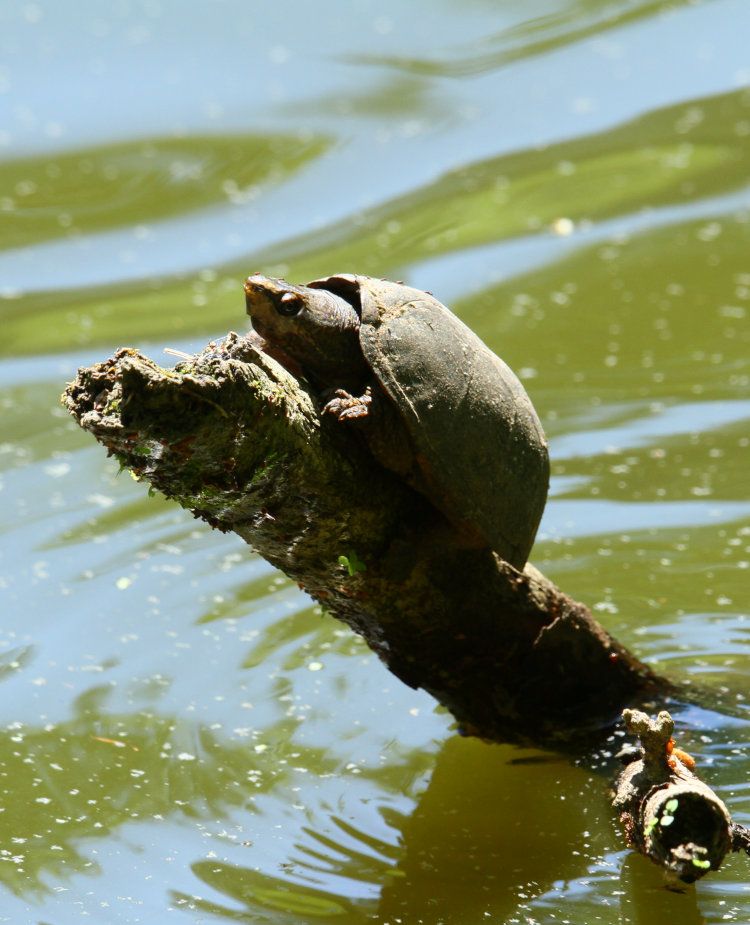
Is it a common musk turtle (Sternotherus odoratus)? Is it a striped mud turtle (Kinosternon baurii)? Is it an eastern mud turtle (Kinosternon subrubrum)? I don’t know – it’s Earth Day, not Scientifically Accurate day, so let’s not get ahead of ourselves.
But this one is, naturally, a red-eared slider (Trachemys scripta elegans,) and a complacent one at that:
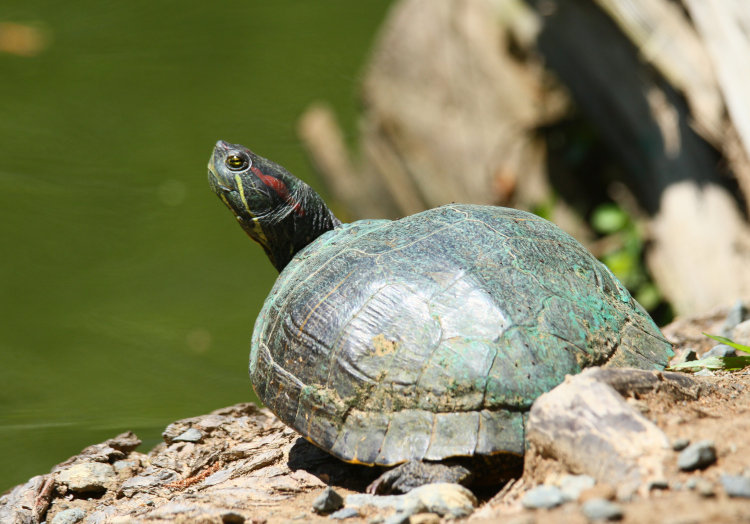
I saw this from a distance away and made sure I got frames of it before I approached, but the caution wasn’t necessary – it simply watched me but never even twitched from its position as I passed not five meters away. The blue-green patina on its carapace is likely from copper sulfate, which was used by the people living around the pond to control the weeds, for reasons unknown (I’ve heard that it’s to keep the pond from being “choked” with weeds, but the only species growing there is a shallow water type that couldn’t possibly choke a pond that size or depth.) While I’ve been assured that they’re no longer using copper sulfate, this might be evidence otherwise – or it might simply be from the turtle burrowing in the mud at the pond bottom over the winter, because copper sulfate remains there for a long time, another reason not to ever use it. That’s your Earth Day tip.
Also basking was a female double crested cormorant (Nannopterum auritum):

This is way too similar to many other images posted here, mostly because the cormorants love these pilings, of which I can only achieve two vantages of. Well, three, but the third is over a hundred meters off across the pond and not worth the effort. But we have a peek at the green eyes, and the light shows off the varied feather types, so there.
I have plenty of photos of great blue herons (Ardea herodias herodias) too, but it’s Earth Day – did I mention?

This one passed overhead before disappearing, never perching anywhere that I saw, nor hunting along the pond edges. But it came out pretty sharp against the background trees, which is rare – there must be something right with my lens.
A male red-bellied woodpecker (Melanerpes carolinus) was industriously excavating a very old dead, standing trunk:
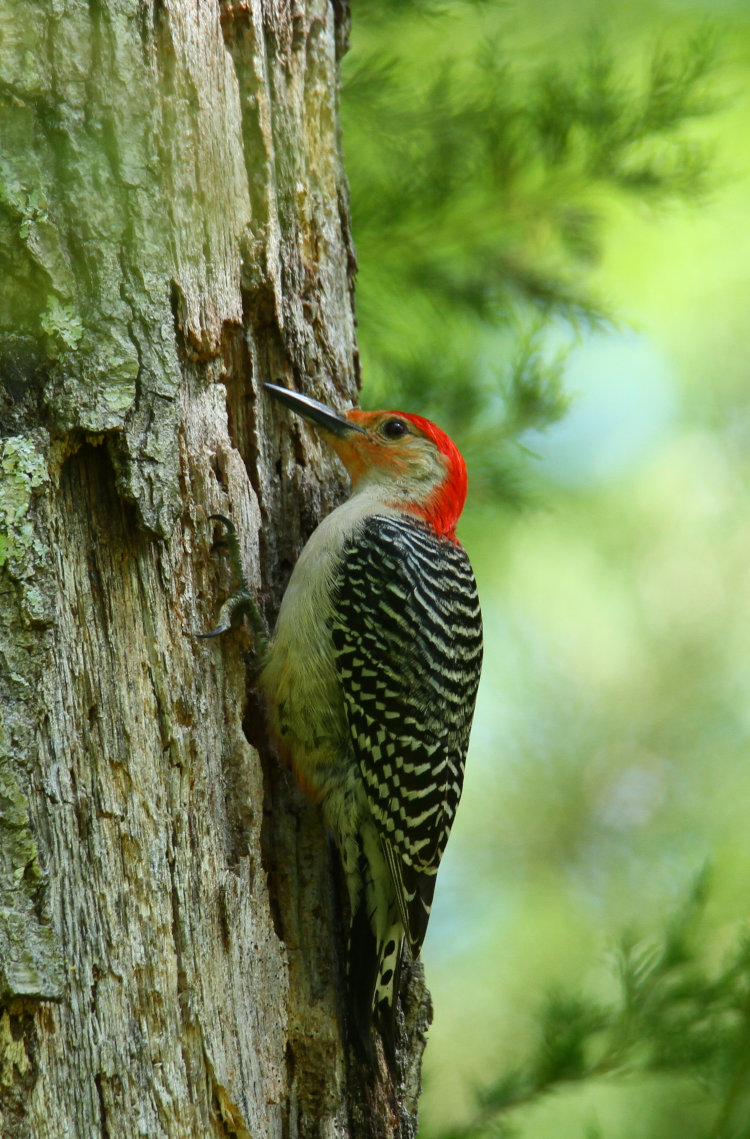
This one attracted my attention with its calls as I drew close, so I was able to find it easily, since its destructive efforts were in really rotten wood and thus making little noise. I took way too many frames, because occasionally it would send a larger hunk of wood flying and I was hoping (in vain, as it turns out) to capture one in the pic. But this particular frame shows a catchlight in the eye and a nice sheen off of the beak, which none of the others had – it’s the little things.
Back home, one of The Girlfirend’s orchids (that’s one of the orchids, not one of The Girlfriends) are in bloom, and I felt obligated to get some frames of it because I don’t think I ever have before.

On a hunch just now, I took the UV flashlight out there to see if any part of these fluoresced, but nada. Fluorescence, however, is the trait of absorbing UV and re-emitting photos in visible wavelengths, and has nothing to do with how much UV the flowers might reflect – which we can’t see without UV capable sensors. One of these days I’ll tackle that, but it’s expensive.
We need a closer look, though.
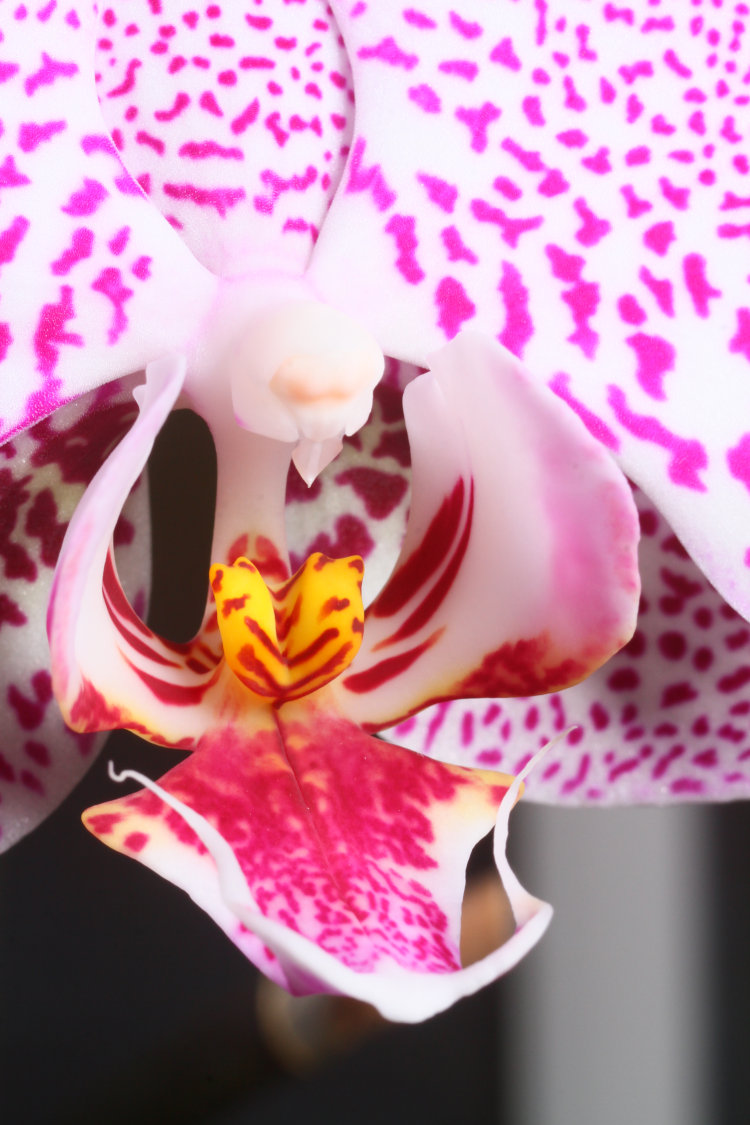
That… really does look like a trap, doesn’t it? Just the thing to knock off a member of an away team. Does the spike above come down, or do the three lower petals slam closed on your hand, or is the orange thing both sticky and caustic? Maybe there are simply some tendrils closing in behind you as you stare at it…
But finally,
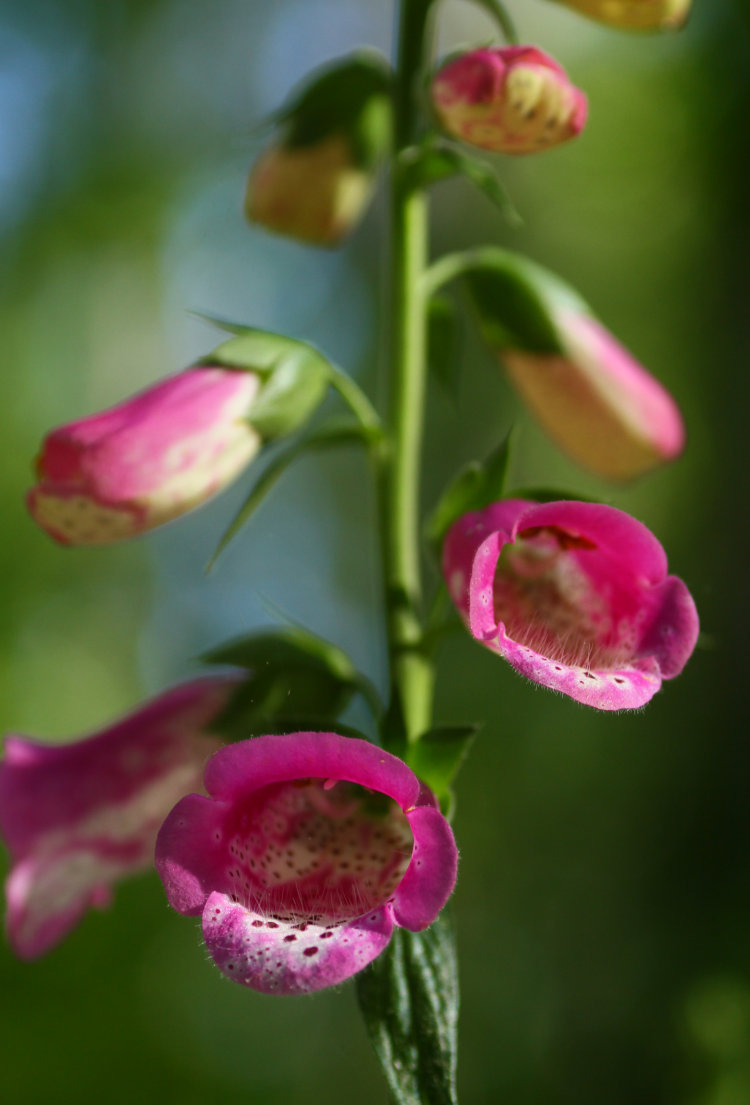
The ‘Pink Panther’ variety of foxglove (Digitalis x ‘Pink Panther’) that we’d obtained last year spent the winter in the adjunct greenhouse, and wasted no time in springing into bloom once it came out – it may regret this as there’s a goddamn frost warning for tonight, sheesh. But for now, the first blooms look healthy and happy and I needed a pic of them, so here we are. Oh yeah, and it’s Earth Day, so they serve double duty.
More images will be along shortly – even two more from today that fit in better elsewhere. You’ll know what I mean on Wednesday.




















































